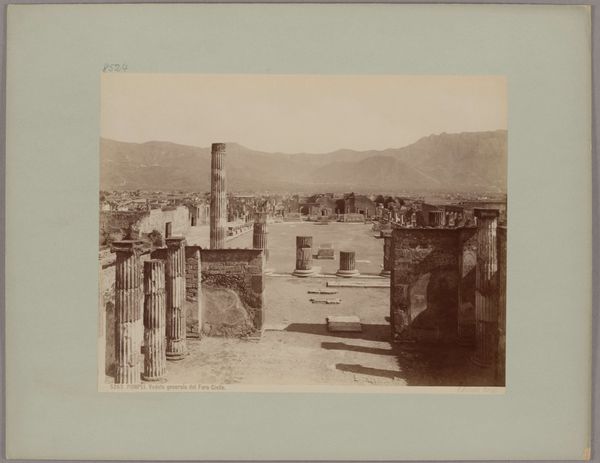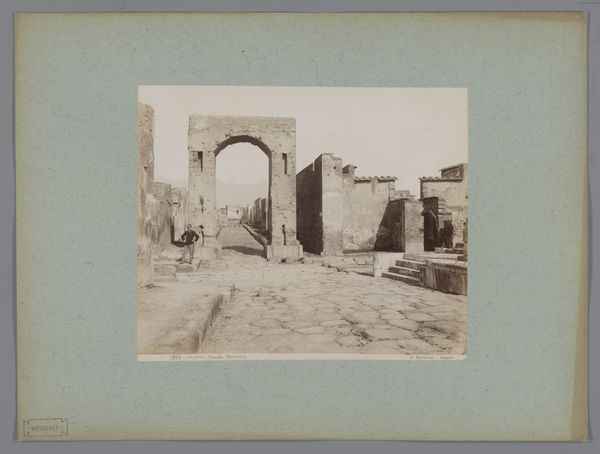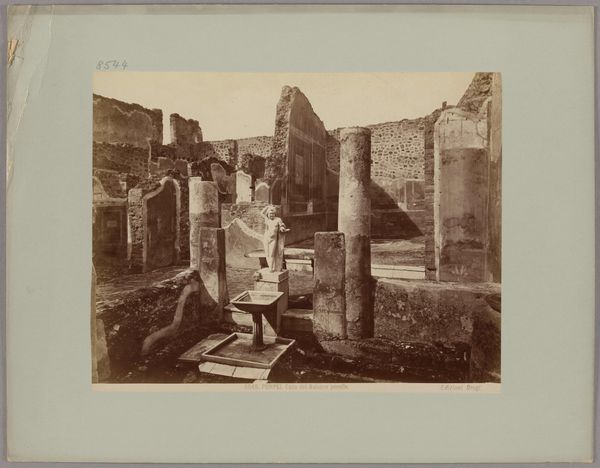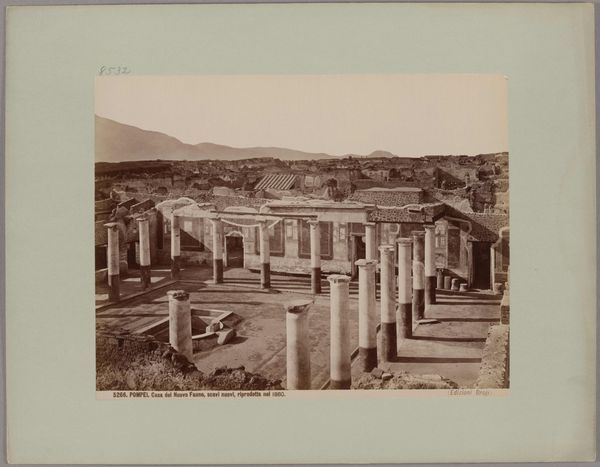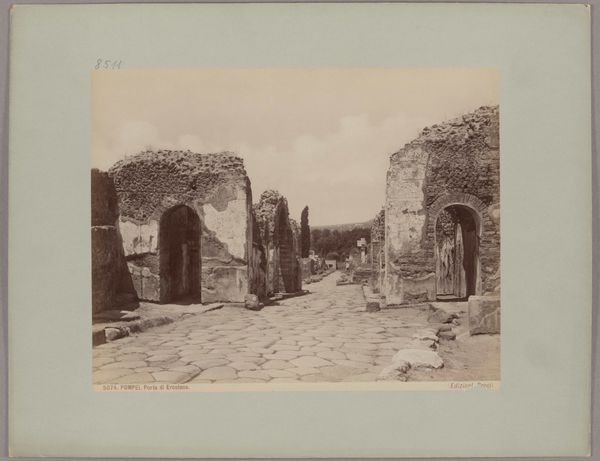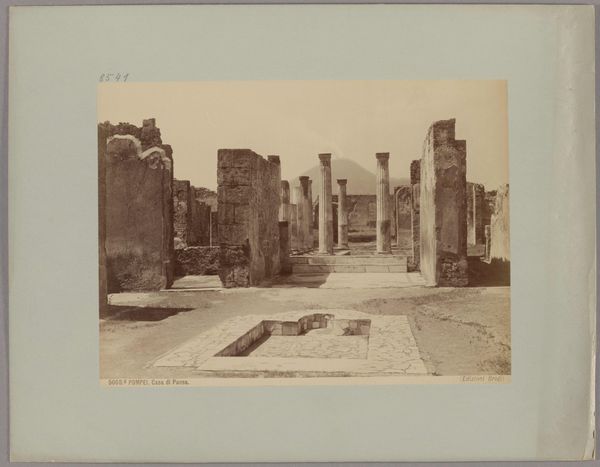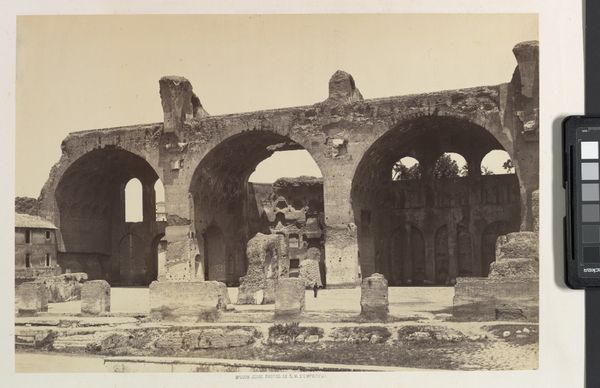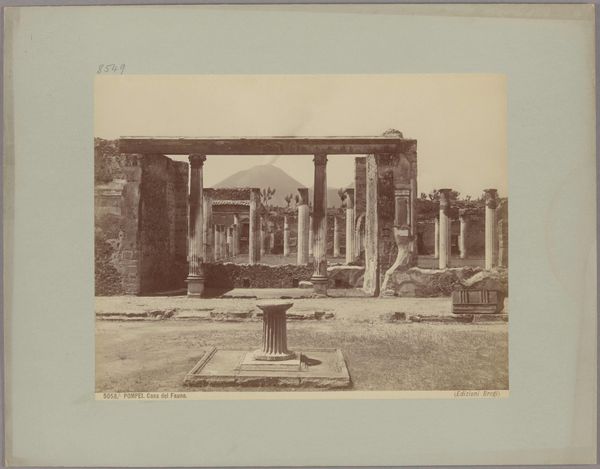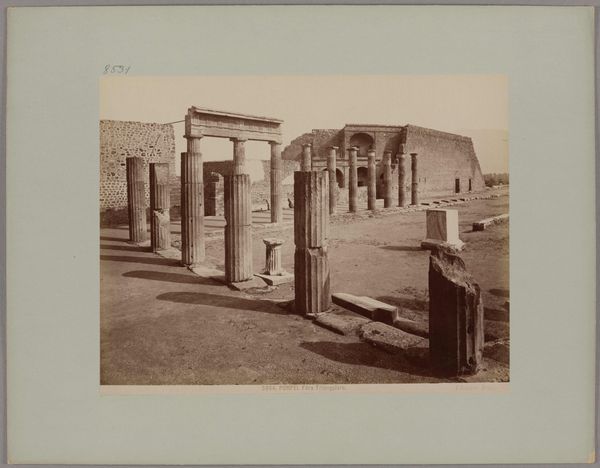
albumen-print, paper, photography, albumen-print, architecture
#
albumen-print
#
16_19th-century
#
landscape
#
paper
#
photography
#
ancient-mediterranean
#
history-painting
#
albumen-print
#
architecture
Copyright: Public Domain
Editor: This is a photograph by Giacomo Brogi, taken sometime between 1880 and 1890, of the House of Marco Lucretius in Pompeii. It's an albumen print, sepia toned, capturing a quiet, almost ghostly ruin. What do you see in this piece? Curator: What strikes me is how this photograph invites us to contemplate the persistence of symbols across time. Look at the sculptures and architectural fragments. They were laden with meaning for the Romans, reflecting their beliefs, values, and power structures. Brogi's lens captures not just a physical space, but also a cultural memory. How do these images resonate with us today, do you think? Editor: Well, seeing these ruins does evoke a sense of history and the passage of time, of course. It makes you think about how civilizations rise and fall, and how their stories are preserved or lost. Is there something particular about this house, or these specific symbols, that might have stood out to viewers in the late 19th century? Curator: Absolutely. Pompeii, rediscovered only a century before this photograph was taken, became a powerful symbol of the classical world and a tangible connection to antiquity. The house itself, with its preserved art and architecture, offered a glimpse into Roman domestic life and ideals. The statue becomes an echo of its original form, and stands at the edge of an abyss, of history lost and then found. What kind of cultural baggage does an artwork carry as an echo in time? What did it once signify? What might it represent in a century? Editor: That makes a lot of sense. So, Brogi's photo isn't just documenting a place, but also engaging with the Victorian era's fascination with the classical world and with this concept of rediscovering ancient cultures? Curator: Precisely! He’s leveraging the inherent symbolic weight of Pompeii to evoke a sense of wonder, loss, and the enduring power of the past. Photography becomes a medium through which the ancient world can be made present, a shared cultural touchstone. This wasn’t merely a landscape image, it was a vessel of collective memory. Editor: I never thought about it that way! Thanks for showing me how this photograph is much more than just a record of a place; it's a doorway into understanding how different eras connect through images and shared cultural understanding. Curator: Indeed! The image is an example of how the symbols shift, reform, and get reshaped throughout history. Art provides a continuity of the symbols of our collective human consciousness.
Comments
No comments
Be the first to comment and join the conversation on the ultimate creative platform.

